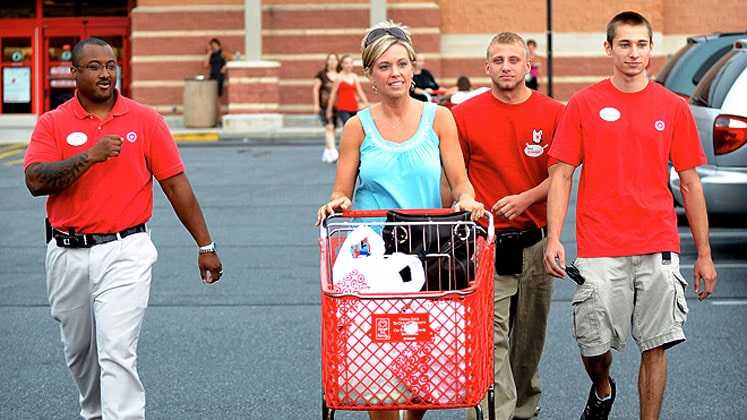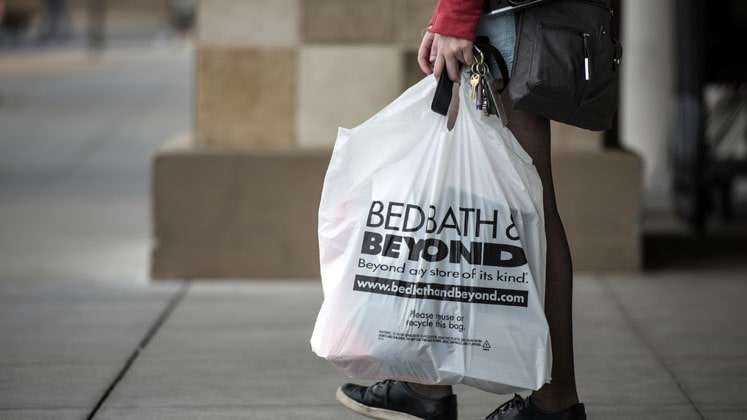
While the deadly pandemic still continues to haunt many sectors in different parts of the globe, it seems the retail world of the US and UK – especially those into apparels and fashion – are coming back to normalcy, albeit gradually.
Reopening of economy in the US, UK and some of the European countries in addition to surge in vaccination rates has brought back the shoppers to stores and made them purchase items – especially clothes and fashion accessories. Importantly, it has brought back the smile on the face of the retailers.
The economy is up and running in the US, and total US vaccine dose, at the time of writing this piece, stands at 82.4 per 100 people in the US. While the US retail sales jumped by 9.8 per cent in March 2021 (the biggest since May 2020), the retail sales of apparels and apparel accessories in particular rose by 18.3 per cent in the month – and it’s been good ever since. In fact, total US sales for February through April were up 27.1 per cent year-over-year (Y-o-Y). Retail sales increased 10.7 per cent in March. Clothing and accessory stores saw a 5.1 per cent decrease from March, and sales were up by 726.8 per cent unadjusted Y-o-Y.
Also Read : 2021 has something to cheer for the US retail sector…
Similarly, in the UK too, sales volumes in April 2021 rose by 9.2 per cent month on month (M-o-M). Now that’s the biggest jump in the UK since June 2020. Notably, apparel sales surged by nearly 70 per cent in the month. The response from the customers has now instilled a new confidence in retailers and we are seeing better numbers, store launches, foray into new categories, acquisitions and new strategies from the retailers. The second innings seems to have begun well and if all goes well, there shouldn’t be any looking back.
Good traffic drives first quarter; retailers eyeing new stores
The American fashion retailer Target saw its Q1 sales jump by 23 per cent – all thanks to the newly buoyed up exuberant customers. However, what’s been the biggest noticeable aspect is the performance of its stores during the quarter. Over 95 per cent of Target’s first quarter sales were met by its bricks-and-mortar stores and here one must credit the retailer’s efforts to create a good and safe shopping environment for its customers. So it wasn’t surprising to see when Brian Cornell, Chairman and CEO, Target , said that he was proud of the performance of its stores and the fact that consumers are enthusiastically rushing to stores now as they are more comfortable venturing out.

Talking of product categories, apparel was the biggest gainer for Target with Q1 comp sales touching more than 60 per cent. Meanwhile, the retailer had recently said that it plans to build on recent growth by investing nearly US $ 4 billion annually over the next few years to speed along new stores, remodel existing ones and increase its ability to quickly fulfill online orders.
The new world has also seen the famous American chain of discount retailers TJX Companies and Ross Stores make a comeback as apparel shoppers crave for treasure hunt – much more than what they did even before the pandemic had hit the world. Both the retailers are witnessing a pent-up demand from apparel shoppers who now seem to have additional stimulus dollars to shop whatever and whenever. Consequently, their sale numbers have been impressive to say the least.
While TJX saw its first quarter sales jump by 130 per cent to post US $ 10.09 billion from US $ 4.41 billion last year, Ross’ Q1 sales more than doubled to touch US $ 4.52 billion compared to US $ 1.84 in the previous year. In fact, an exuberant Ross is now expecting the compared sales for 2021 to increase between 7 and 9 per cent, compared to what it was in 2019.
Earlier this year TJX had announced that it plans to open 81 stores across its brands in 2021. It owns TJ Maxx, Marshalls, Sierra and Home Goods, amongst others. Similarly, Ross Stores recently opened four Ross Dress for Less (Ross) and three dd’s Discounts stores across five different states, which are part of the company’s plans to add around 60 new stores – 40 Ross and 20 dd’s Discounts locations – during 2021.
The American multi-national lifestyle retailer Urban Outfitter too is upbeat about the terrific response from the new vaccinated customers that has helped its net sales for the 3 months ended 30 April 2021 grow by 7.3 per cent from 2019 to US $ 927 million – 57.6 per cent jump in 2020 for the same period. The company’s CEO Richard A. Hayne , said “The first quarter was one for the record books, record sales, a record low markdown rate and record earnings per share.”
Other reasons for the retailer’s optimism include Urban Outfitter taking benefit of today’s favourable lease terms and planning 34 new store launches in 2021. Besides, its athleisure Movement line is showing strength with 138 per cent Y-o-Y growth along with a digital sales growth of astonishing 150 per cent. These are some numbers! Additionally, Urban Outfitter is in an expansion mode for its stand-alone Movement stores and predicts the brand to touch US $ 250 million by 2024.
The rush of vaccinated shoppers seems to have benefitted Macy’s too in a big way! The American fashion retailer, in its recently released Q1 report, clearly stated that it has added 4.6 million new customers across all channels during the quarter. Now, that’s a surge of 23 per cent from what it was in the same period of 2019. Importantly, out of the 4.6 million new customers, 3 million were brand new to Macy’s, whereas remaining 1.6 million were dormant customers who were re-engaged. The retailer’s Q1 net sales, notably, grew to US $ 4.71 billion from US $ 3.02 billion in the previous year, while the profit was US $ 103 million. In April alone, sales of clothes and clothing accessories rose by a massive 727 per cent.
The numbers generated in the quarter driven by ‘vaccine economy’ have been so encouraging that Macy’s now believes that its aim of making US $ 10 billion in digital sales is attainable by 2023. It now hopes 2021 net sales to be between approximately US $ 21.7 billion and US $ 22.2 billion, with digital contributing about US $ 8 billion of sales to the total. Recently Macy’s also announced to open new ‘Backstage’ locations, with plans for 45 stores within Macy’s stores in 10 states in 2021 – the target is to reach 270.
Joules , the British retailer known for selling clothes at country shows, too has upped its full-year profit guidance. And it isn’t surprising considering that increase in e-commerce sales as well as reopening of stores have boosted retailer’s sales for 11 months ended 2 May 2021. The ‘vaccine economy’ has been so good for the retailer that it now believes that sales and profits for FY 2021 will beat analysts’ forecast of £ 187 million revenue. The retailer also said that the pre-tax profit before exceptional items would also better to £ 4.1 million predicted by analysts.
Foraying into new product categories…
It’s not just been about opening new stores or remodelling old ones, 2021 has also been seeing lot of brands exploring new product categories in their efforts to survive and also thrive. While 2020 continued to be disastrous for most of the fashion retailers, it was actually activewear that propelled to new heights in 2020 and importantly it continues to grow in 2021 as well – expectedly so. Every big brand has understood the relevance of fast-growing demands for activewear and is getting into it. And there are good reasons for the same!
If the estimates of Allied Market Research are anything to go by, then the activewear market value is expected to touch US $ 547 billion by 2024. So, it wasn’t surprising when during Kohl’s recent earnings call, Michelle Gass, CEO, Kohl’s stressed on how Kohl’s was refreshing its apparel selection by carrying more products from activewear and outdoor brands. The renowned US fashion retailer saw its Q1 net sales jump by a huge 69.5 per cent. The quarter also saw its net revenue soar by 60 per cent to reach US $ 3.88 million. Notably, the gross margin more than doubled from what it was last year, with a net income of US $ 14 million.
So, it wasn’t surprising when the American fashion retailer announced plans to continue fuelling the apparel growth with an expansion of its activewear products by 20 per cent over 2021 – launching a new private label activewear brand, partnering with Calvin Klein for athleisure basics and adding new products from activewear brand Champion.
Earlier this year we saw another American clothing retailer JCPenney stating its plans of giving activewear a new look. The retailer, following its bankruptcy exit, has been initiating efforts to rebrand itself. JCPenney has redesigned its Xersion R activewear line with the help of latest performance technology EVERAIR TM . The design encourages a distraction-free workout for its customers, with sweat-proof pockets, reflective and anti-odour elements besides several other features. In March 2021, US sportswear giant adidas joined hands with Peloton to offer its customers their maiden joint activewear collection. The 11-piece activewear collection comprised shorts, tights, tanks, tees, amongst others.
Besides, Bed Bath & Beyond , the fashion retailer based in the US, also has expressed its plans to increase its private-label brands from 10 per cent to 30 per cent of its overall merchandise selection over the next three years, and the brands will play a key role in the retailer’s turnaround efforts.
Then there’s Knix , the Canada-based direct-to-consumer intimate apparel brand, which recently closed on a US $ 40 million funding round led by TZP Group. The intimate apparel brand said that it will be using the fund to help support product innovation, brand building and launch new products. Knix has been reinventing the intimatewear category by combining performance, technology and design to make beautiful and functional products that serve their customers.
What’s noteworthy here is that Knix closed on this funding round in the wake of strong growth. The company said that it is highly profitable and has a five-year average yearly growth rate of 150 per cent. The brand is now aiming to soon generate revenue of more than US $ 100 million. Founded in 2013, Knix was recently named the 6th fastest growing company in Canada with over 3,800 per cent 3-year growth.
While mass brands like Mango and & Other Stories have already taken advantage of the opportunities created by activewear segment, lingerie brands like Thinx too have joined the race.
Even in the UK, clothing giant Marks & Spencer had earlier this year announced that it was planning to expand its Goodmove women’s activewear range by including menswear and kidswear. The decision to expand the Goodmove range follows M&S’ study that clearly showed that over half of its consumers (52 per cent) wore activewear in 2020.
Browns , another British fashion retailer, is the latest to foray into kidswear sector. Browns will, reportedly, make its debut in the kidswear sector with over 35 brands – and that will range from ‘established’ to ‘the next generation’ besides some cult kidswear favourites. The retailer also said that it is important that the launch – which happens in July 2021 – continues with its tradition of nurturing new talents and the focus would be to involve the next wave of creatives. The retailer is keen to create a destination for kids and their parents that go much beyond apparels.
Sweden-based & Other Stories , owned by the H&M, too has come up with its maiden mini-me kidswear collection for girls. Besides the six pieces in its exquisite collection for young girls, & Other Stories also has some coordinating items for mothers or adults. The capsule collection comprises the best of matching dresses or coordinating sets for children and adults, including the likes of puffed sleeves, ditsy floral prints and scalloped hems. The womenswear brand has also ensured these are sustainable as well, with organic cotton being used in the majority of the collection.
However, with so many brands getting into activewear now and more in pipeline, every brand is going to compete hard for market share with low differentiation and these brands know well that only new ideas, new technology and new trends will help them survive and thrive.
New business strategies deployed
E-commerce in the US reached US $ 196.66 billion in Q1, up by 39 per cent year over year from US $ 141.52 billion in the same quarter of 2020. So, while e-commerce continues to delivering amazing performance, by now we have also seen that for many retail giants like Target and Macy’s, bricks-and-mortar stores too have been productive. The numbers have proven that! However, a lot of fashion retailers are now embracing omnichannel strategy. As some experts say, omnichannel is less about where you sell and more about identity, consistency and personalisation. The American fashion retailer Bed Bath & Beyond has understood this very well and has been investing in its digital-first Omni-always strategy providing customers with safe and easy services to shop.

Surpassing US $ billion in digital sales and increasing its online conversion rate by 30 per cent – all thanks to BOPIS, Curbside Pickup and other technological enhancements – Bed Bath & Beyond now has plans to launch at least 8 owned brands, reimagined stores and many more. The retailer expects Q1 net sales, on a reported basis, to jump by more than 40 per cent, and hopes to deliver around US $ 80 to US $ 90 million in adjusted EBITDA.
Similarly, Oasis , the UK-based fashion retailer, has been fusing its e-commerce site, mobile app, and bricks-and-mortar stores into a simple shopping experience. And it is working! If one walks into one of its stores, one can find sales associates armed with iPads that are available to give shoppers on-the-spot, accurate and precise product information. Another UK-based fashion brand Topshop , which produces trendy apparels for women, as part of its marketing campaign for London Fashion Week , had unveiled a series of digital billboards that were displayed throughout the UK.
Business acquisitions too are happening….
2021, despite all challenges and uncertainties, has seen quite a few retailers acquiring or merging companies to grow their business further. Even if the retailer isn’t performing as well as it should, it may well be less expensive to buy an existing business than to expand internally. And to add to it, one gets wider customer base, trained staff and business intelligence without much effort.
Following its acquisition of US sportswear and footwear retailer DTLR for US $ 495 million in March 2021, JD Sports has acquired a British clothing retailer now. The British sportswear retailer has bought the Manchester-based fashion retailer Oi Polloi and its e-commerce assets.
Despite warning that it could take a hit of over £200 million from the COVID-19-induced store closures and frequent lockdowns, Frasers Group has been growing and acquiring some notable fashion bigwigs this year. Back in January 2021, Frasers had announced the acquisition of online and store operations of Psyche following a buyout deal of undisclosed amount. And now, the Mike Ashley-owned retailer, as per media reports, is planning to acquire the German luxury fashion house Hugo Boss. In January this year, Frasers Group had increased its shares in Hugo Boss by up to 15.2 per cent – thereby representing 5.1 per cent of Hugo Boss’ total share capital. The Group has also, reportedly, said that it intends to be a ‘supportive shareholder’ of the German fashion brand.
Boohoo Group , the renowned British fashion e-tailer, which saw its profit before tax jump by 35 per cent to clock £125 million for the year ended 28 February 2021, is also happy to see customers spending on apparels. The Group revenue too surged for Boohoo by 41 per cent to £1.7 billion – all thanks to robust growth in revenue across regions. After buying Debenhams earlier this year, fashion e-tailer, also bagged the remaining fashion brands of the collapsed Arcadia Group in February this year. It acquired Burton and Wallis as well as Dorothy Perkins for a little over £25 million. The purchase of Arcadia brands is expected to enhance Boohoo’s market share in addition to increasing its already large base of customers.
The renowned American retailer Authentic Brands Group LLC has, reportedly, agreed to acquire outdoor clothing and gear merchant Eddie Bauer, adding another well-known brand to a portfolio of retail names. Authentic Brands, along with and SPARC Group LLC are acquiring Eddie Bauer’s 300 stores and e-commerce business. Besides, the reputed American brand management firm is now also interested in acquiring the ailing US sportswear brand Reebok – and for this, the Group is willing to pay US $ 1 billion. Notably, SPARC is a joint venture between Authentic Brands and Simon Property Group.
Also Read : Authentic Brands Group is now interested in Reebok
As we are reaching the middle of the year, pandemic still hasn’t left us, but with economy opening up and restrictions lifted across the US and UK and, importantly, with consumers willing to pay for dresses and fashion items, the retailers too are looking confident of seeing a better and brighter 2021. Though it is still too early to talk about how 2021 finally turns out, considering the uncertainty that still hovers around the retail world, yet there is a hope that a new innings has started – and started well.
Once you choose hope, anything is possible
Christopher Reeve

Post a Comment